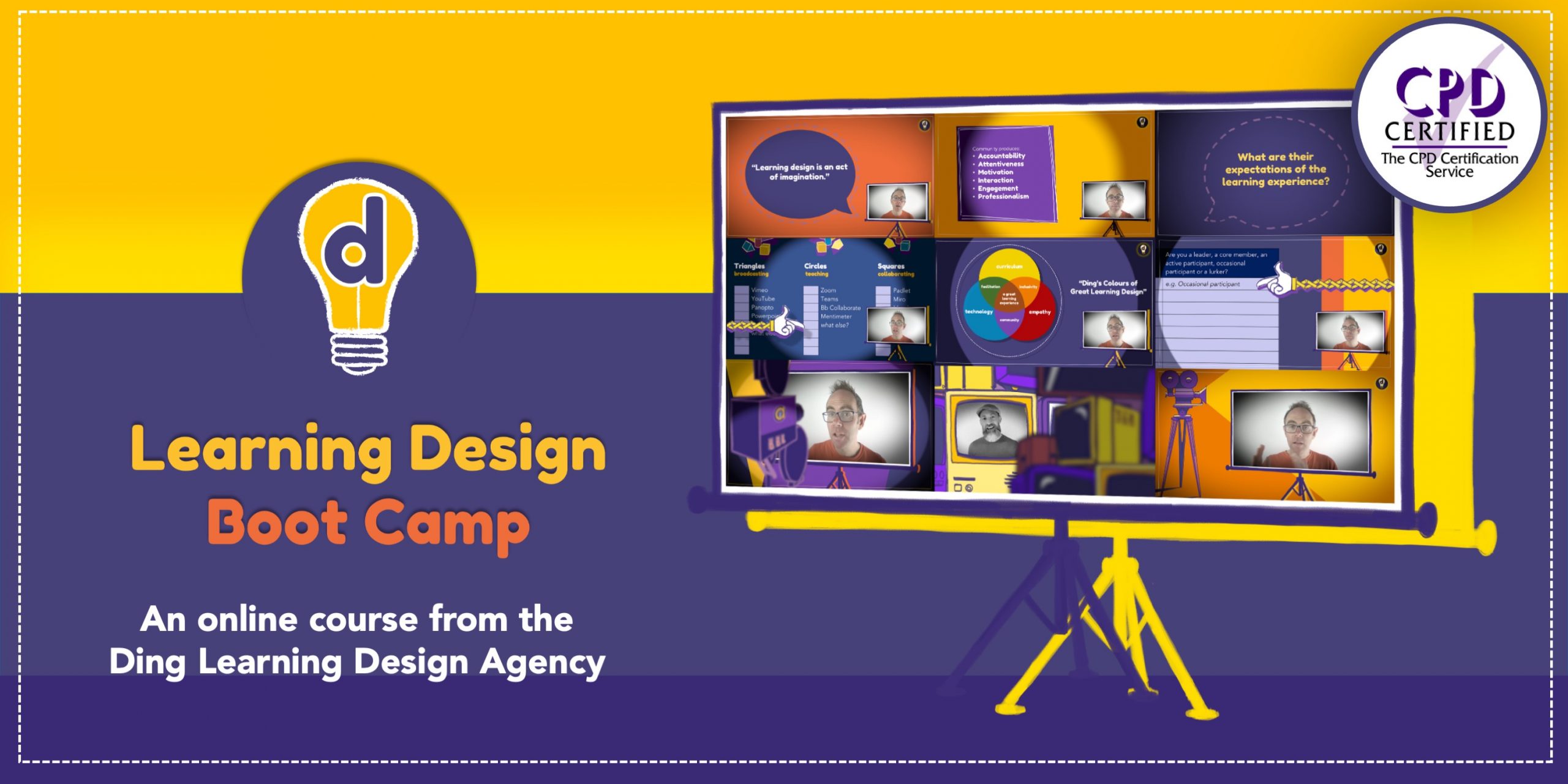It’s an obvious statement, but technology can both help and hinder learning. And if we’re not careful, it can create more barriers to learning than it reduces.
In this article, we’re going to look at how cognitive load affects learning, and the role that technology plays in increasing and reducing cognitive load.
The impact of cognitive load on learning
When we’re learning something new, we experience something called ‘cognitive load’ as our brain tries to make sense of the new information. Cognitive load refers to the idea that our working memory can only hold a limited amount of information. When we’re thinking about using technology in learning design, we therefore have to ask ourselves how much ‘load’ the technology will place on the learners. If they’re very familiar with the intended technology, the load will tend to be less. The aim is to minimise the additional cognitive load produced by asking learners to use a specific technology.
Imagine you’ve just bought a new television. What you want is to be able to watch programmes on it – we can call this your learning goal. But before you can watch a programme, you have to work out how to switch it on, navigate the menu system, connect it to the internet, tune the channels, adjust the colour and turn up the volume. All of these steps are barriers between you and your learning goal – you have to use effort to overcome all these barriers before you can do that. Once you do, your reward is that you can finally watch television.
The same principle applies in video games design. If a video game is too easy, we stop playing it. But equally, if it’s too difficult, we give up and stop playing it. The art of video games design is to ensure players are absolutely clear about the goal they’re trying to achieve, that this goal remains crystal clear throughout the game, and that at all times the difficulty level is just hard enough to motivate them to keep playing.
Effort and reward
The dynamics of effort, reward and cognitive load are integral to effective learning design. Research in cognitive science shows that if we have to use effort to learn something, we’re much more likely to remember it. If it’s too easy, the information doesn’t stick in our long-term memory. If it’s too hard, we won’t achieve the intended learning outcomes. But we only have a limited amount of effort – we won’t keep trying to learn something indefinitely.
When we introduce technology into a learning design, the key thing is this: the technology is not the intended learning outcome. While it is almost inevitable that using technology will increase the cognitive load that learners experience, we don’t want learners to use up all their effort figuring out how to log in to a platform, or trying to work out what button they need to press to send a message. We want them to use their effort to complete the task we’ve set them so they can achieve the intended learning outcomes.
So how do we ensure that technology doesn’t significantly increase cognitive load and get in the way of learning? Well, there are four key principles we can use to guide us, and they are Relevance, Accessibility, Security, and Usability. Let’s look at each of these in turn.
Relevance
Firstly, we should always ask whether digital technology is relevant to the learning design. Is it really necessary that we use technology at all? What will it add to the learning experience? This is where it helps to ask ‘what aspect of learning are we trying to affect with technology?
For example, we might want to deliver content to learners before a session, in which case we need a tool to broadcast content to them. Or we might want to provide a real-time online group-work activity, in which case we’ll need an online classroom tool that enables us to facilitate interaction so learners can socially construct new knowledge. Or perhaps we want them to discover new ideas and do research into some threshold concepts, in which case we’ll need a tool that supports discovery and enables learners to capture and share their learning.
The point is once we’ve established the aspect of learning we’re trying to influence, we can then start looking for tools that will have the desired effect and put together a list of options.
Accessibility
After we’ve created a short list of potential technologies, the next questions are ‘can all learners access them’ and ‘what barriers to learning do these technologies create?’ This is the ‘accessibility’ criterion, and we can use it to evaluate the suitability of each technology on our short list. If a technology prohibits some learners from participating, we have to instantly discount it. This can often happen when learners are in organisations or countries that restrict access to specific tools.
Once we’ve checked that all learners can use a technology, we can then investigate the barriers to learning it might create. For example, we might want to share videos with learners, but if a platform doesn’t allow subtitles or closed captions we have to strike it off our list. Then we might evaluate whether the platform works effectively with screen readers, which are tools that read out text for people who are blind or who have low vision.
We also need to consider the device learners will use to access the content and activities. If we assume they have a laptop, we may be mistaken – it could well be that they will be accessing everything on a phone or a tablet. So we need to ensure the platforms and technologies we choose work effectively regardless of device.
Security
This leads us on to our third criterion, which is security. Once we’ve established that all learners can access the content and activities, we must do everything we can to ensure their data is stored securely. There are no hard and fast rules here, other than that as learning designers we need to do our research into the past performance of each technology.
Depending on your situation and location, you may need to work within international policies such as the General Data Protection Regulations, or GDPR. If you’re working in an organisation, you’ll also need to stick to internal policies and regulations which may further restrict the digital tools you’re allowed to use.
Usability
Once we’ve satisfied these three criteria, the fourth and final question is ‘what quality of learning experience does each technology produce?’ There are so many digital tools that can be used for learning, but it’s all too easy for technology to get in the way of learning. If a digital tool is working effectively in a learning design, it should be mostly invisible.
Our learners may well be finding the content hard enough to learn, so the last thing we want is for the technology they’re using to make it even harder. We have to bear in mind that most of the digital technologies available today weren’t designed with learning in mind – it’s up to us as learning designers to make informed decisions and choose tools that enhance the learning experience, rather than get in the way of it.
So if we want to make sure technology doesn’t get in the way of learning, we need to focus on learning first, and technology second. It’s the learning outcomes that are important, not the technology – the technology is just a vehicle that takes learners to the learning outcomes. And we can use these four principles of Relevance, Accessibility, Security and Usability to help us identify digital technologies that are appropriate for supporting learning.
You might also like:
Thank you to:
- The Unsplash community for a fabulous photo!
Interested in learning design?
Then you might like our Learning Design Bootcamp.
Download the brochure to find out about the activities and assignments, and have a look at some of the course videos
You can also book a call with the Ding team who will answer all your questions!



